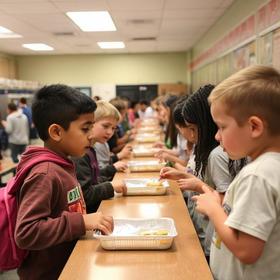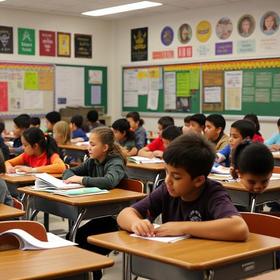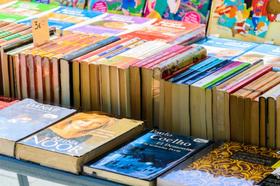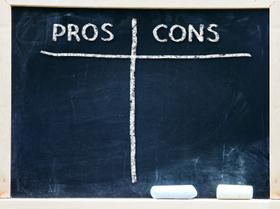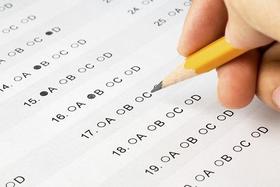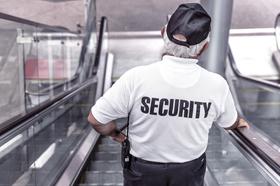Public School Holiday Celebrations: Christmas-centric or Multicultural?
With the children home for the holidays, with the spirit of love and peace in their hearts, how did their schools celebrate the season? Or did they celebrate Christmas?
In many locations, holiday parties involve decorating contests with Christmas trees and ornaments. In elementary schools, Santa might make an appearance. Songs of reindeer and gifts ring out, along with talk of who’s been naughty or nice. Children are asked to write essays on “what I want for Christmas,” or after the holidays, they are asked to explain what gifts they received.
However, this Christmas-centric view does not align well with the actual makeup of today’s public schools. Research shows that today’s public schools are more diverse than ever. While the data tends to speak from an ethnic or racial point of view, it still indicates the need to take multiple perspectives into account. Schools have to begin to recognize that not all children celebrate Christmas and have made adjustments that make their celebrations more inclusive. However, there is still much work to be done if public schools are to have a truly multicultural perspective.
In this video, The Doctors discuss a recent news story about a school district that banned all dominant holiday celebrations in the name of inclusion.
Unintended Consequences
There remain many public schools in this country that engage in holiday celebrations that revolve around Christian ideas and principles as they pertain to Christmas. While these celebrations are no doubt intended to spread Christmas joy, there are negative consequences to these kinds of celebrations for children who do not belong to the Christian faith or who do not celebrate Christmas at all.
Children who practice Islam, Hinduism, and Buddhism do not celebrate Christmas. Many Jewish families do not hang stockings or exchange gifts on Christmas day. Thus, espousing the mainstream Christian views of the holiday can alienate children who do not engage in such celebrations and offend parents whose religious beliefs differ from those celebrated at school.
To add diversity to holiday celebrations, some teachers believe that recognizing the Jewish holiday Chanukah or mentioning Kwanzaa, which also occurs in December, is enough to make holiday parties and curricular activities multicultural. However, critics argue that doing so serves to amplify the problem rather than fix it.
First, Chanukah does not hold the same importance for Jews as Christmas does for Christians. Instead, Passover, which occurs in the spring, and Rosh Hashanah and Yom Kippur, which appear in the fall, are much more important. Second, because the majority of public school teachers are white, it can be assumed that the vast majority know little or nothing about Kwanzaa in practice, which was created in 1966 as a ritual for African Americans to welcome the first harvest home. Offering celebrations at school in line with that holiday could seem trivial to students who celebrate it.
Some teachers may reach out to children who practice one of these religions or have alternative cultural beliefs to get a better understanding of their beliefs. The unintended consequence of doing so is that these children may feel singled out. Furthermore, children in the minority may not even understand what their teacher needs to know since their teacher has likely demonstrated vast knowledge of many other subjects. It may cause the child to wonder why their teacher never took the time to learn about something meaningful in their life.
This puts teachers in a very tough position because, without a more multicultural point of view, children of the majority are led down a path of ethnocentrism, albeit unintentionally. By seeing their majority beliefs imposed upon classmates who do not celebrate Christmas, children may get the impression that their worldview and traditions are the only ones or at least the most important ones.
This isn’t to say that teachers or public school systems intend to belittle students for their religious beliefs or cultural practices. On the contrary, most public school teachers genuinely wish to be sensitive to each child’s needs. However, the status quo of celebrating Christmas, and even referring to the winter break as “Christmas Break” in public schools, remains the primary culprit of this problem. However, having a discussion that negatively casts such good-intended events can be challenging.
How to Celebrate in a Multicultural Manner
If you celebrate Christmas in your family, you can assume – rightfully – that most of your child’s classmates also celebrate Christmas. However, not all children share the same beliefs. Suppose you come from a religious or cultural view that does not celebrate Christmas. In that case, you likely have a heightened awareness of the holiday celebration problem in many public schools.
However, there are a number of steps that can help these parties celebrate less about a specific religion or social practice and more about the beliefs common to many religions and cultural practices – goodwill towards others, charity, and family – among them. Celebrate the season of giving, from human being to being.
Regardless of how your child's school celebrates the holidays, there are many ways parents can enrich understanding at home. What a meaningful addition to a child's winter break!
- Emphasize the spirit of giving – Children can study historical figures who spent their lives focused on the needs of others. Children can also make gifts for one another, their parents, or other family members. Taking part in a food drive or toy drive for less fortunate families is another great way to teach about the spirit of giving.
- Hold multicultural celebrations – Recognizing the diverse beliefs of children in a given classroom should extend beyond December. To give credence to various beliefs, celebrations could occur throughout the year at the appropriate time. Celebrations could include a history lesson on the development of the holiday or an investigation of the cultural significance of the celebration.
- Limit celebrations to foundational ideas – An essential part of multiculturalism is to inform children about various points of view, but doing so without getting into the religious aspects of celebrations can be difficult. However, by focusing on foundational ideas such as charity, celebrations become more universal without the added layer of religious debate.
- Maintain anti-bias goals – Holiday celebrations can be used as a vehicle for an examination of the similarities and differences that make us so great. Exposing these differences and celebrating them non-judgmentally is an excellent lesson for children.
This video offers suggestions on how educators can celebrate Religious holidays within a public school classroom
What You Can Do as a Parent
How did your child's school fare this year in celebrating the holidays? Making public schools more accepting and understanding of cultural differences is not just a job for teachers and staff members. As a parent, you have ample opportunities to help your child and his or her classmates adopt a multicultural worldview -- around the year.
- Educate your child – Regardless of your religious or cultural traditions, be sure your child understands what they are and why you celebrate them. If you choose not to celebrate holidays, help your child understand why. This knowledge will allow them to share their perspective and develop an environment of understanding and respect.
- Educate your child’s teacher – Give your child’s teacher background on your family’s belief system. This doesn’t need to be an in-depth discussion of Kwanzaa, Judaism, or whatever your belief system might be. But giving your child’s teacher a background at the beginning of the year will allow them to make considerations when it comes to holiday celebrations, class discussions, and lesson planning. If teachers aren’t aware of your child’s worldview, they can’t possibly make it a part of a multicultural classroom environment.
- Offer to help – If you practice a belief system among the minority, offering your assistance to your child’s teacher can be invaluable. Help plan a classroom celebration, offer to speak to the class about your beliefs, or lead a discussion about multiculturalism. Your insights will prove valuable to the children, and their teacher will appreciate the assistance.
This video illustrates one way to teach children the importance of giving.
Make Multiculturalism a Year-Round Venture
Multiculturalism is not something that should only make an appearance in December. Instead, teaching and learning should include lessons that open children up to other cultures and viewpoints year-round. But this means that teachers have to work hard to ensure that each child experiences cultural relevancy every day. Classroom decorations, lessons, activities, and the like should look, feel, and sound familiar to what children experience at home. Children should feel comfortable expressing who they are and sharing their experiences with their classmates. When this is done, children feel a more profound sense of connection to one another and feel their unique perspectives are respected and validated.
Questions? Contact us on Facebook and Instagram. @publicschoolreview
#PublicSchoolReview #InclusiveEducation #MulticulturalHolidays #DiversityInSchools #EducationEquity


